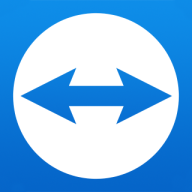


TeamViewer and Check Point Remote Access VPN are key competitors in the remote access software category. TeamViewer seems to have the edge due to its faster ROI and free version for personal use.
Features: TeamViewer offers cross-platform compatibility, remote control capabilities, and firewall bypass functionalities, which make it user-friendly and fast. Check Point Remote Access VPN provides seamless access integrated with existing firewalls, offering strong security features like multi-factor authentication and centralized management.
Room for Improvement: TeamViewer needs to enhance interoperability across versions, improve clipboard management, and provide better Linux support, along with more affordable enterprise pricing options. Check Point Remote Access VPN should focus on improving its Linux support, user interface, scalability for larger user bases, and faster support response times.
Ease of Deployment and Customer Service: TeamViewer is known for its easy deployment across cloud environments and generally does not require much technical support. When needed, its customer service is effective. In contrast, Check Point Remote Access VPN, though offering extensive deployment options, may require additional licenses and more technical expertise to handle its configurations, with slower customer support response being a noted issue.
Pricing and ROI: TeamViewer provides a free version with scalable pricing options, though some see the cost as high, it's balanced by rapid ROI due to time and travel savings. Check Point’s competitive pricing includes separate licensing fees for VPN features, which can be costly, leading to a potentially slower ROI compared to TeamViewer.



Microsoft Intune provides centralized management of mobile devices and applications, ensuring security, compliance, and productivity through integration with Microsoft services like Microsoft 365 and Azure Active Directory.
Organizations use Intune for managing mobile devices and applications, enhancing security and compliance across platforms. With features like single sign-on, conditional access, and zero-touch deployment via Autopilot, it facilitates efficient operations. Intune's scalability, easy enrollment, and capabilities such as remote wipe support diverse device management, offering robust data protection and efficient operation. Despite its features, improvement areas include reporting, compatibility with non-Microsoft devices, and better support for macOS and Linux devices.
What are the key features of Microsoft Intune?
What benefits should users look for in reviews?
In industries such as finance, healthcare, and education, Microsoft Intune is implemented to ensure secure and compliant device management. Companies leverage its capabilities to deploy security policies and manage both corporate-owned and BYOD environments, facilitating a unified approach to data protection and compliance.
Remote secure access VPN is a solution that provides users with remote access to an organization’s network. The host may have VPN client software loaded or use a web-based client. The solution leverages security features like multi-factor authentication, endpoint scanning, and encryption of all data in motion.
Check Point Remote Access VPN provides individuals with protected and efficient access to a company network from anywhere. This strategy fosters collaboration and connectivity between distributed teams and offices.
Features of Check Point Remote Access VPN
Key features of the secure remote access VPN include:
The system enforces endpoint security with endpoint compliance. It monitors and verifies the security status of each endpoint and reports back to the Security Gateway. The gateway, in turn, checks the compliance level and directs the connectivity to the right resources.
Users can deploy the Remote Access VPN in one of three ways:
Remote Access VPN is centrally managed. The centralized console enables management and enforcement of policies with a single log-in.
The Remote Access VPN has a web portal that users can use to connect securely to corporate applications, such as web-based resources, file-sharing, and email. Administrators can customize the web portal to match the brand identity.
Remote Access VPN offers two choices for remote access:
The authentication features include password management, RADIUS challenge/response, CAPI software, and hardware tokens. P12 certificates, and SecurID.
The system establishes a VPN tunnel on demand. It also re-arranges connections when roaming. The tunnel can automatically tear down when the user is on the corporate LAN.
There are several connection features, such as Hotspot detection, office mode IP, split tunneling, and automatic fallback to HTTPS.
Benefits of Check Point Remote Access VPN
One of the key advantages of Remote Access VPN is that it provides remote workers with a secure way to connect to a corporate network from any device, including their personal devices. The data encryption in transit enables them to securely access the resources they need for their tasks.
It also provides IT support and technicians with a faster way to troubleshoot software issues. In the case of a ticket, IT doesn’t need to go to the server location to fix the problem but can troubleshoot it remotely.
A remote secure access VPN is also an affordable alternative for small and medium-sized businesses, without requiring expensive infrastructure.
Reviews from Real Users
A Global IT Network and Security Service Senior Specialist at a manufacturing company who uses Check Point Remote Access VPN says, "I found the MEP feature the most valuable. This has improved users' latency allowing the users to connect to the nearest Azure Check Point VM."
"Organizations that already use the Check Point NGFW Solution do not require any additional hardware, which makes the implementation straightforward and reduces the time to go live," explains Basil D., Senior Manager at a financial services firm.
Manuel B., a Voice and data infrastructure specialist at a tech services company, says that "The IPSec VPN, Mobile Access, and Identity Awareness are three of the blades with which we have been working with since the pandemic. This has given us great mobility, making our network more dynamic."
TeamViewer is a remote access solution that allows users to connect to any PC or server around the world within a few seconds. When using it, users can remotely control a computer, transfer files, and access various services such as video conferencing and virtual meetings. The solution works on various operating systems including Windows, Mac, Linux, iOS, and Android. As a well-recognized provider of remote control and online meeting software, TeamViewer is mainly used for remote technical support, remote access, and online collaboration.
TeamViewer Features
TeamViewer has many valuable key features. Some of the most useful ones include:
TeamViewer Benefits
There are many benefits to implementing TeamViewer. Some of the biggest advantages the solution offers include:
Reviews from Real Users
TeamViewer is a solution that stands out when compared to many of its competitors. Some of its major advantages are that it is user friendly, has a simple installation, and has good monitoring and remote access features.
Samuel M., IT Supervisor at a financial services firm, says, “I think TeamViewer's most valuable feature is that it is user friendly. Creating passwords is easy and so is security.”
“[The TeamViewer solution has a] good user interface, simple installation, and has a free version available,” mentions PeerSpot reviewer Alexandru V., Software Test Engineer at a tech services company.
Another reviewer, David O., Managing Director, explains why he likes the solution: “[It] is a very good tool for monitoring and for remote access. Anyone is able to use it, it is simple to use."
We monitor all Remote Access reviews to prevent fraudulent reviews and keep review quality high. We do not post reviews by company employees or direct competitors. We validate each review for authenticity via cross-reference with LinkedIn, and personal follow-up with the reviewer when necessary.